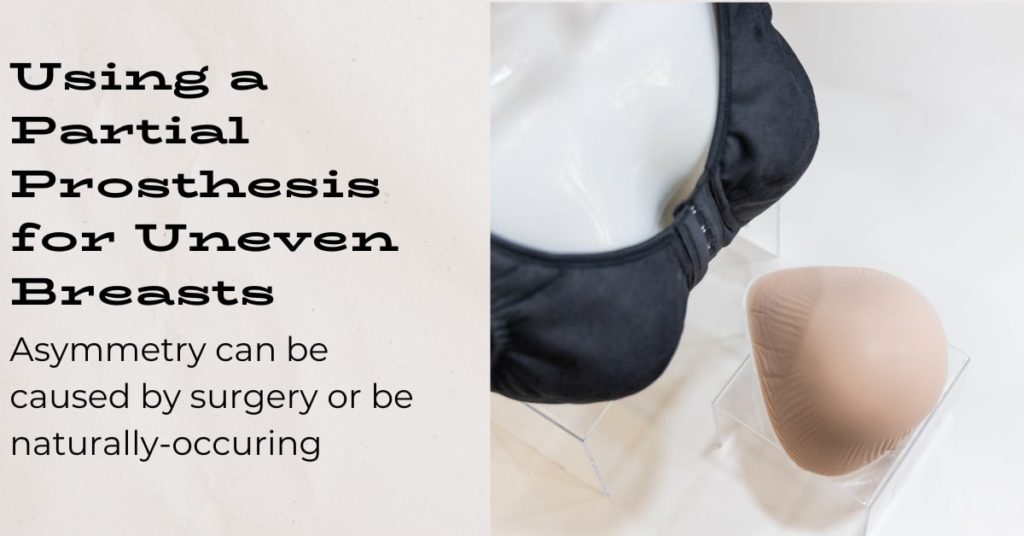For women who deal with asymmetry, a partial breast prosthesis may prove to be an affordable and easy option to consider. Even though prostheses are associated with women who’ve had breast cancer, they can work just as well for those who have naturally uneven breasts. Usually though, asymmetry can be caused by any one of the following:
- Lumpectomy. This procedure aims to keep the same appearance of the breast, but sometimes, a large tumor removal can affect the shape post-surgery.
- Partial mastectomy. Typically in this procedure there is more tissue taken than in a lumpectomy, but not the entire breast as in a mastectomy.
- Breast reconstruction. Especially when one side requires to be reconstructed, symmetry can be hard to achieve. Natural breast shapes, like the ones discussed here, are difficult to recreate.
- Radiation. Exposure on just one side can lead to irregular breast growth. This may occur months to years after the treatment is finished; it may not be noticeable immediately. Besides asymmetry, there are plenty of other side effects to be on the lookout for.
A partial breast prosthesis, or a breast shaper, could be a great investment to achieve the appearance you had before surgery. Maybe, your uneven breasts are steering you away from your favorite outfit. Whatever the case, getting the body confidence you deserve can be a life-changer. Though prostheses may give the impression that they’re unsupportive and unrealistic- they’ve actually come a long way. It all depends on the quality and comfortability of the prosthesis.
Why get a partial breast prosthesis?
Partial prostheses come in all different shapes, sizes, colors, thicknesses and materials to accurately “fill in” the voids in tissue. Not only are they designed to smoothly blend in, but many are made with soft silicone to recreate the feeling and comfortability of a natural breast. These can either stick directly onto the skin with adhesive strips, be placed into a regular bra, or go inside the pocket of a mastectomy bra. For an even more seamless look, we do personal scan sessions for a custom fit.
Besides the obvious benefit of looking symmetrical, they may serve to protect your surgical scar so that you heal better and can keep your bra in place while doing something active. Remember, though, that the adhesive or “stick-on” types should be avoided for 12 months after surgery and sometimes, radiation. This is because there is a chance it could damage your skin, but it really depends on the kind of incisions you have. It’s best to discuss this with your doctor to figure out your individual situation.
What else can they be made from?
They can also be made from other materials besides silicone, such as foam rubber, cotton, or fiberfill (a polyester material used in the padding of clothing). Usually, women choose based on how it adapts to their lifestyle. For example, silicone will feel a bit more natural but can feel warmer more than a non-silicone prosthesis. Both styles can fit discreetly under a bathing suit and it won’t retain water, though the non-silicone can be slightly lighter weight in your suit. Some women find it useful to have both styles so that you can switch them out depending on things like the weather or if you workout often.
Shapers for after breast reconstruction
Some women who’ve undergone breast reconstruction find that their breasts are more flat than round. For this issue, a shaper that provides fullness just at the apex of the breast should work well. ABC’s apex shaper, a shaper we carry in-store, is an excellent option to target this specific area.
Our elliptical shaper may be another type to consider, especially if you’re looking for a “teardrop” shape of breast. The design is fuller at the bottom and tapers quite a bit at the top. This is ideal for after a lumpectomy, partial mastectomy, or any other surgery where more breast tissue was taken from the bottom.
With such a wide selection to choose from, the perfect partial breast prosthesis is out there for you!
